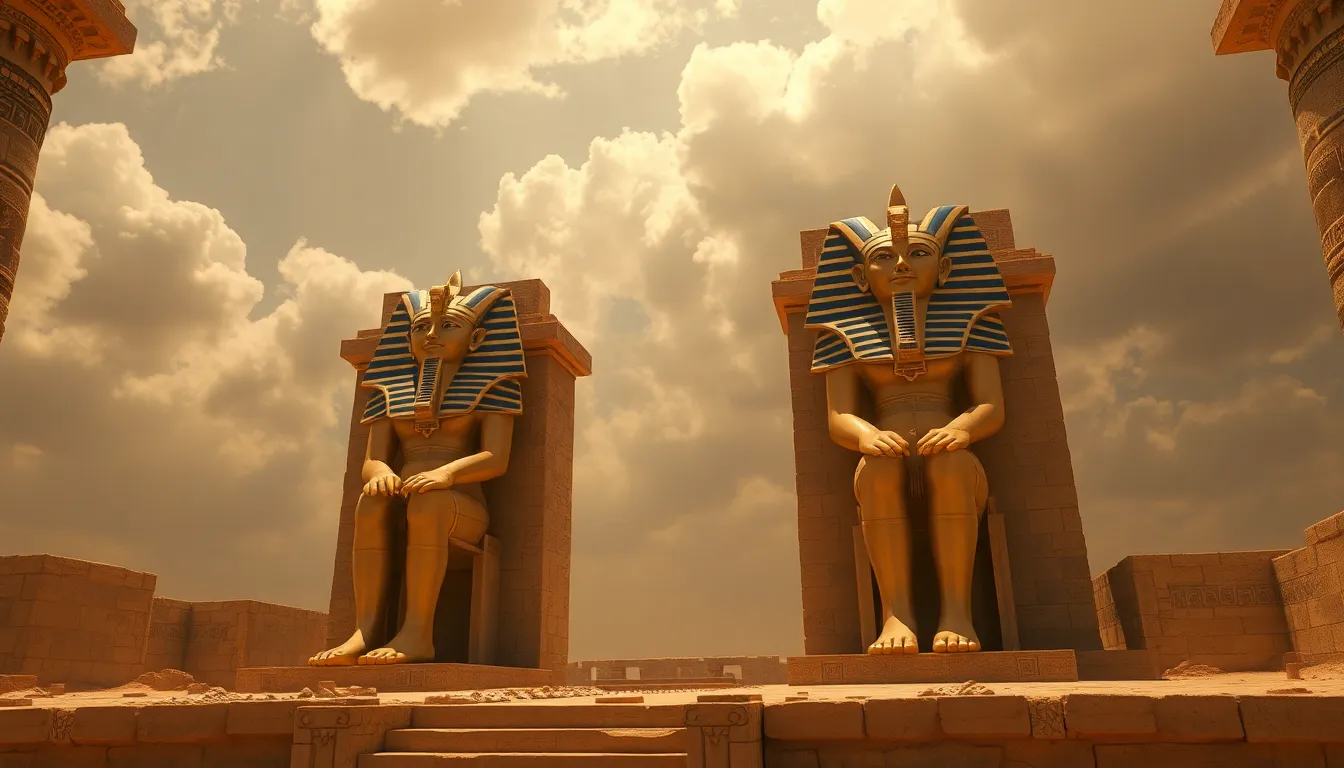The Temple of Sekhmet: The Balance of Destruction and Healing
I. Introduction to Sekhmet
Sekhmet, one of the most powerful deities in ancient Egyptian mythology, embodies the duality of destruction and healing. Known primarily as the goddess of war, she also possesses an essential role as a healer, which makes her a complex figure in the pantheon of Egyptian gods.
The importance of Sekhmet’s temple, particularly in ancient Egypt, cannot be overstated. It served as a center for worship and healing, reflecting her dual nature and the reverence with which she was regarded. The temple was a space where the balance of her fierce destructive capabilities and her nurturing healing powers could be acknowledged and celebrated.
II. Historical Background of the Temple of Sekhmet
The Temple of Sekhmet is located in the ancient city of Karnak, near modern-day Luxor. Its architectural significance is highlighted by its grand design, featuring impressive columns adorned with intricate carvings that depict Sekhmet in various forms.
Construction of the temple dates back to the reign of Pharaoh Amenhotep III during the 14th century BCE, although it underwent expansions and renovations in subsequent periods. The patronage of this temple reflects the deep respect and devotion the Egyptians had towards Sekhmet, who was often invoked during times of war and disease.
Within the cultural and religious context of ancient Egypt, the temple served not only as a place of worship but also as a healing center, where rituals were performed to seek Sekhmet’s favor and protection against ailments and misfortunes.
III. Symbolism of Sekhmet in Ancient Egyptian Religion
Sekhmet is frequently represented in art and literature as a lioness or as a woman with the head of a lioness, symbolizing her fierce nature and strength. Her imagery often conveys themes of power, protection, and ferocity, which were crucial for her followers.
- In art, Sekhmet is depicted with a solar disk above her head, emphasizing her connection to the sun and its life-giving properties.
- Literary texts often describe her as a protector of the pharaoh and a warrior against chaos and evil.
The lioness represents not only power and protection but also the cyclical nature of life and death, as Sekhmet was believed to control the forces of both. Her role in the cycle of life and death is pivotal, as she guides souls to the afterlife while also being capable of inflicting death through her wrath.
IV. The Balance of Destruction and Healing
Sekhmet’s fierce nature is well-documented in various myths. One notable story describes her as a vengeful goddess unleashed to punish humanity for their disobedience to Ra, the sun god. Her destructive rampage was only halted when she was tricked into drinking beer dyed red to resemble blood, leading her to forget her wrath and become a goddess of healing.
Healing rituals associated with Sekhmet were essential to her worship. These included:
- Incantations and prayers seeking her protection and favor.
- Offerings of incense and food to appease her fierce nature.
The significance of balance in her worship was critical; followers sought to harness both her destructive and healing aspects to ensure their safety and well-being.
V. Rituals and Offerings at the Temple
At the Temple of Sekhmet, priests and worshippers engaged in numerous rituals to honor her. Common rituals included:
- Daily offerings of food, incense, and flowers.
- Prayers and hymns recited during sacred ceremonies.
Offerings made to Sekhmet varied widely and were often tailored to the needs of the worshippers. These could include:
- Animal sacrifices, particularly of lions, which were symbols of her divine power.
- Food offerings such as bread, beer, and fruits.
Festivals celebrating Sekhmet’s nature were significant in the temple’s calendar, with the most notable being the Feast of Sekhmet, which marked the transition from destruction to healing and renewal.
VI. Archaeological Discoveries and Interpretations
Recent archaeological discoveries at the Temple of Sekhmet have provided valuable insights into the practices and daily lives of those who worshipped her. Excavations have revealed:
- Artifacts related to healing, including amulets and medicinal tools.
- Inscribed texts that detail rituals and offerings.
These findings have opened up new interpretations of Sekhmet’s role in society, emphasizing her importance not only as a warrior goddess but also as a healer and protector of health.
VII. Legacy and Influence of the Temple Today
The Temple of Sekhmet continues to influence modern Egyptian culture. It stands as a reminder of the rich tapestry of beliefs and practices that shaped ancient society. Sekhmet’s image has transcended time, finding a place in contemporary spirituality and healing practices.
Moreover, Sekhmet’s legacy is evident in modern art and literature, where she is often depicted as a symbol of female strength and empowerment. Her dual nature resonates with themes of resilience and the necessity of balance in life.
VIII. Conclusion
In summary, Sekhmet’s dual nature as both a goddess of destruction and healing is reflected in the significance of her temple in ancient Egypt. The Temple of Sekhmet symbolizes the ongoing relevance of the balance between these two forces.
As we explore her legacy, we recognize that the themes of destruction and healing are still relevant in today’s world, highlighting the enduring power of Sekhmet as a figure of strength, protection, and nurturing.




